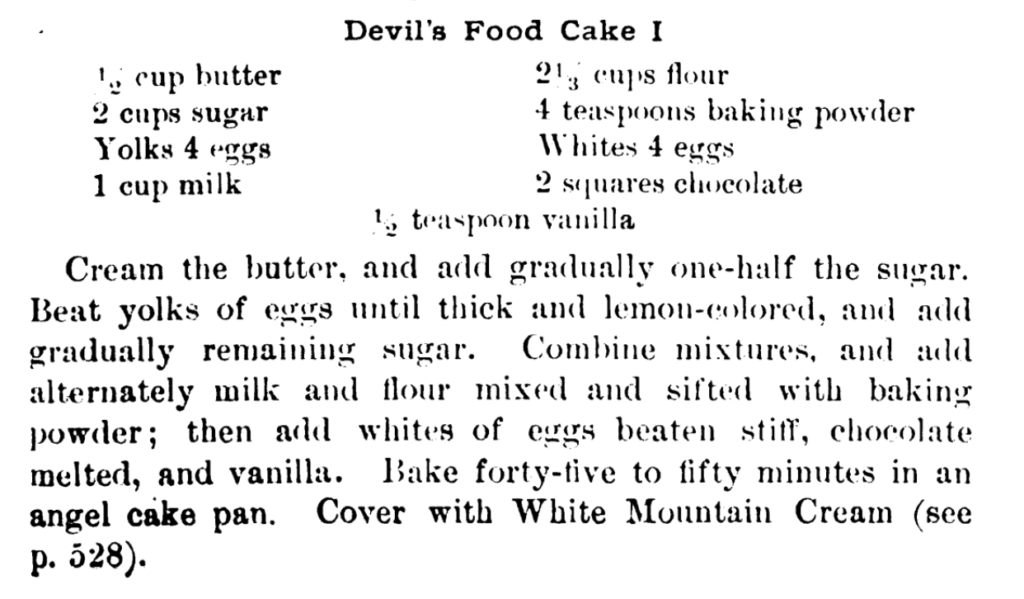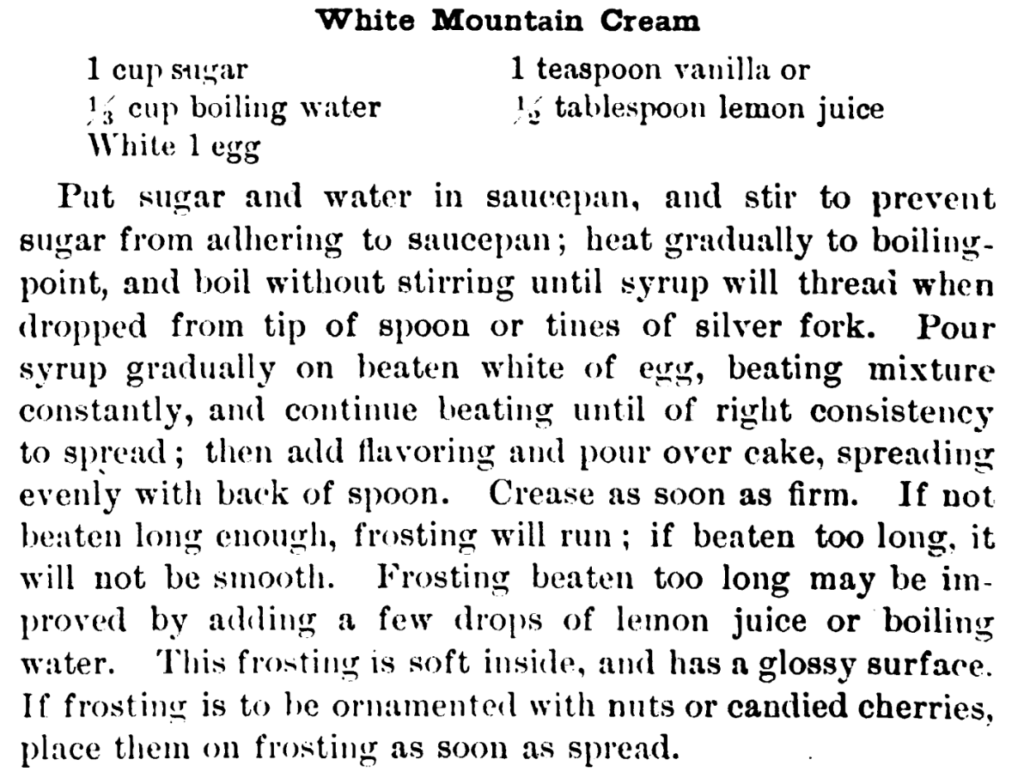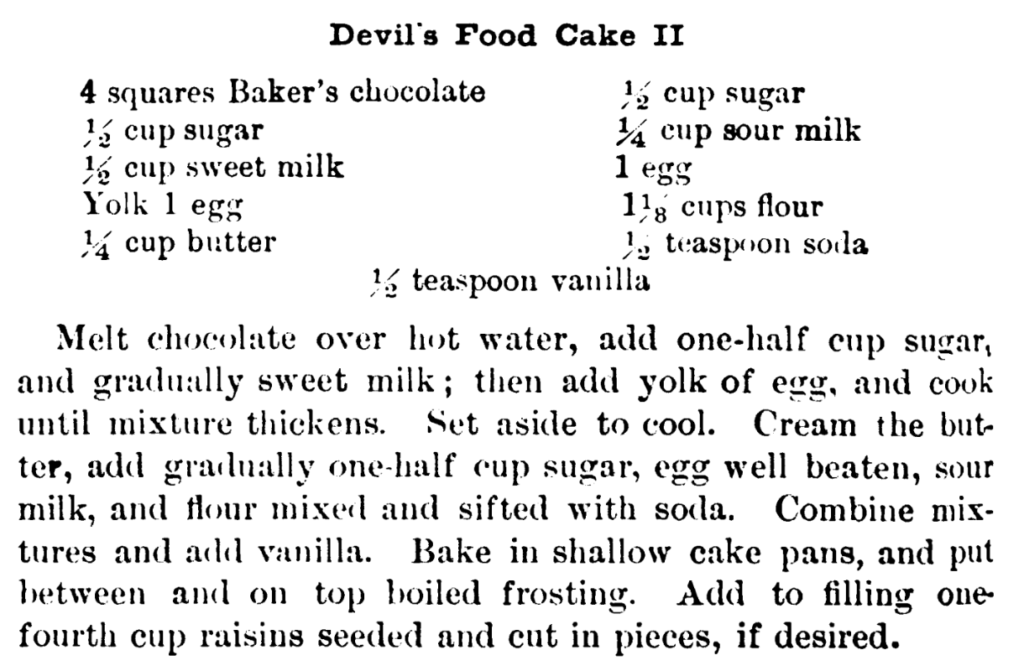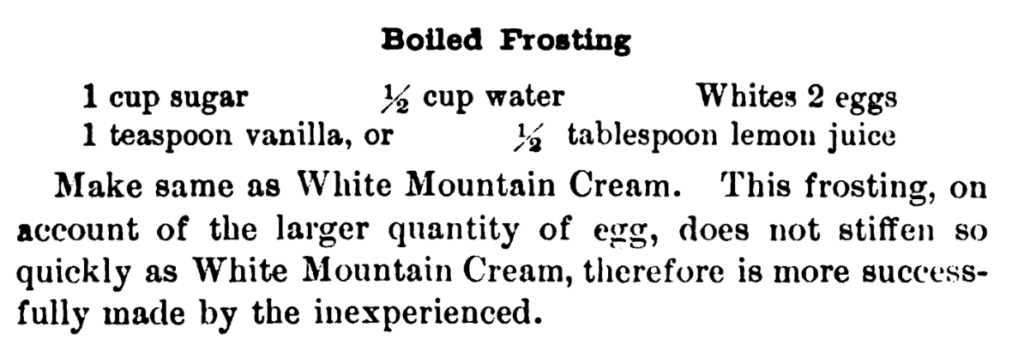Devil’s Food Experiments
For our Century of Cakes, we’re in the first decade of the twentieth century this weekend. My children refer to this as “the 1900s” — a phrase that implies the whole century is Olde Time history, which I suppose might be reasonable when applied to the fin-de-siècle confection devil’s food cake, but feels more than a little cutting when applied to my own birth, way back in that ancient time that might as well be a whole century ago.
In any case, we turn now to devil’s food, a cake that most histories will tell you popularly emerged in the first decade of the 1900s, as an explicit opposite to the popular angel food that better cooks than I am had used to enticed invalids and revelers. My daughter and I tried to make angel food cake a few weeks ago, and failed to beat eleven egg whites to sufficient stiffness, so that our cake never rose to the cloud-like heights it promised. If we’d been trying to make a sponge cake, you might have told us it was tasty. As angel food, it was a disappointment. Such a disappointment that two days after we made it, we sent half a leftover cake back to college with the big brother, who reported that his friends thoroughly enjoyed it with strawberries — because six nineteen-year-old boys have probably never met a cake they couldn’t cheerfully demolish.
Devil’s food uses fairly bitter baking chocolate, which is melted, generally over a double boiler, with milk or cream, and sometimes an egg yolk or two, and often some sugar. To that cooled mixture, one adds dry ingredients, often alternating with more milk (sometimes “sour milk,” for which I am reading “buttermilk”), or with stiffly beaten egg whites. In researching this cake, I found recipes dating back to 1896, which belie the supposed fact I see circulating online that this cake was invented in 1902. Some of them (the earliest ones, not coincidentally, I think) call for baking the cake in an angel food cake pan, which seems the most direct reaction to trying to make a dark, chocolatey opposite to angel food. But pretty quickly, this becomes a layer cake.
Most current recipes frost it with chocolate icing, and the pictures look very much like my beloved chocolate cake recipe off the back of the Hershey’s cocoa powder tin. (If you need a reliable, easy, perfectly rich go-to of a chocolate cake, that’s the one I recommend. But it’s not devil’s food, which does not feature the boiled water that the Hershey’s recipe does, and which generally requires separating eggs and making a soft sauce of baking chocolate.) Of the half-dozen cookbooks I dipped into, ranging from Mrs Rorer’s New Cook Book (1902) to the Fannie Merritt Farmer classic (Boston Cooking-School Cookbook, 1906), and taking in church cookbooks in between, only one recommended chocolate icing on a devil’s food cake. The rest uniformly prescribe white icing — typically a “boiled icing” that is a fluffy confection — even for cakes that are made in an angel food pan. That said, the recipes are fascinatingly varied as to proportions of ingredients and even, to some extent, method, unlike the angel food cakes, which were much more consistent.
Following are several interesting recipes, including the only one I found that calls for brown sugar, which is also the one that uses chocolate icing. Based on the quantity of flour, I suspect the directions for Mrs Rorer’s cake (the first recipe) are correct, and the milk quantity should be half a pint (i.e. 1 cup) rather than 1/2 cup. I’d love to know if you try that one.
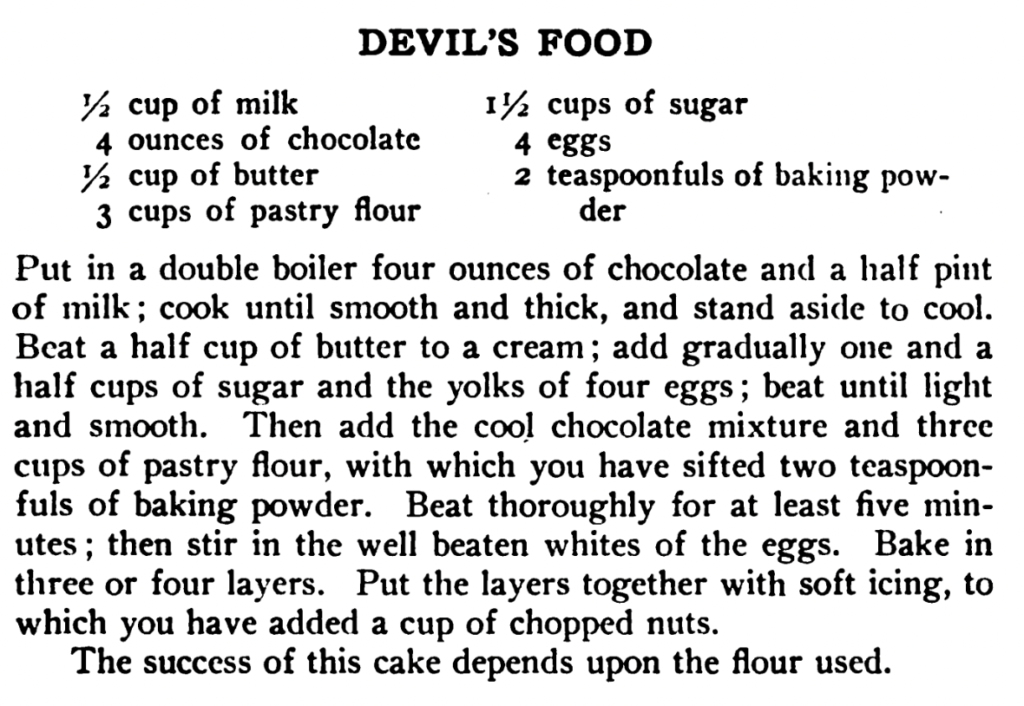
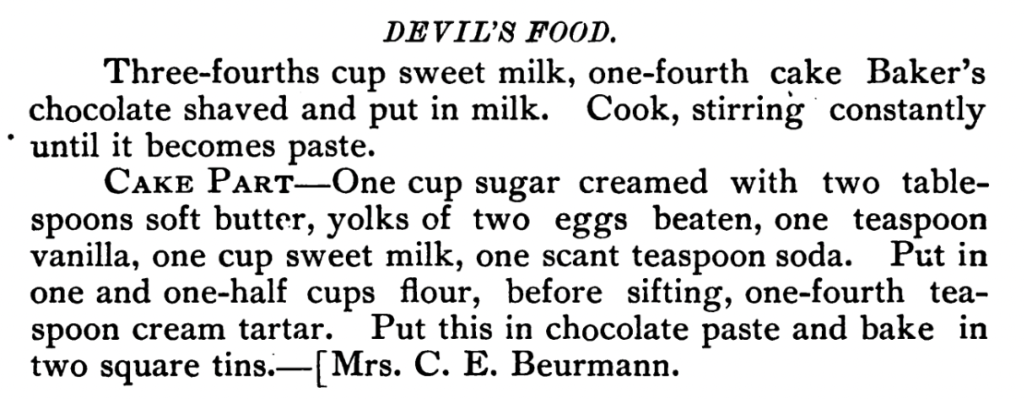
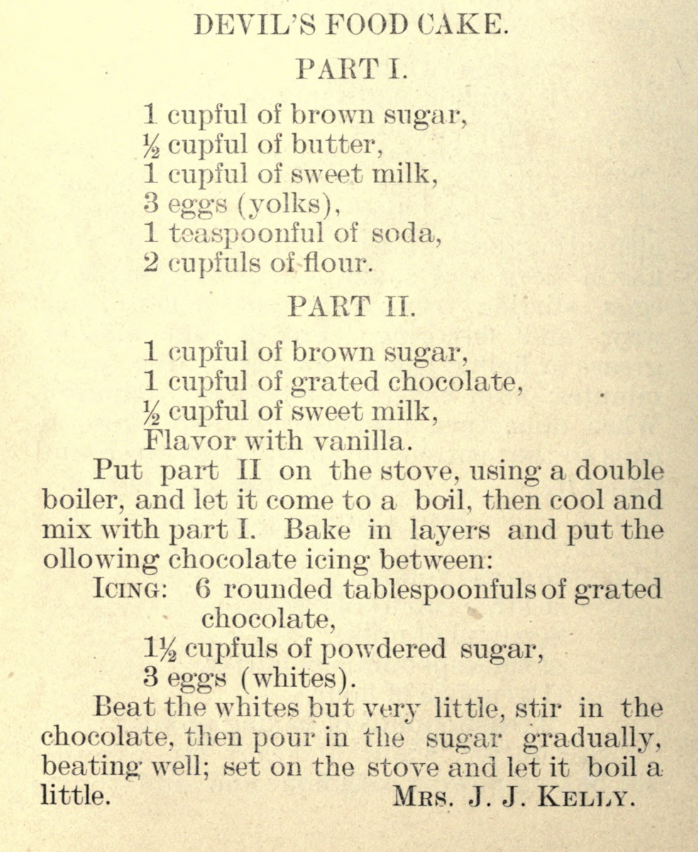
My daughter and I are going to use one of the following two recipes, however, both of which contain less scanty directions than the ones above. They come from the book that eventually became officially known as The Fannie Farmer Cookbook. Growing up, that was the primary cookbook that got pulled down off the shelf for reference at my house. (The only other one I remember getting used with any regularity at all was the Moosewood Cookbook, that staple of the 1970s kitchen.) Both of Fannie Farmer’s recipes call for white icing, though one is baked in an angel food cake pan, and the other is a layer cake. I am including the specific icing recipes to which she refers. All of the recipes come from the 1906 edition of the book (linked above). You could easily enough interchange the icings, since the only difference is the quantity of egg white and thus the ease of use.
